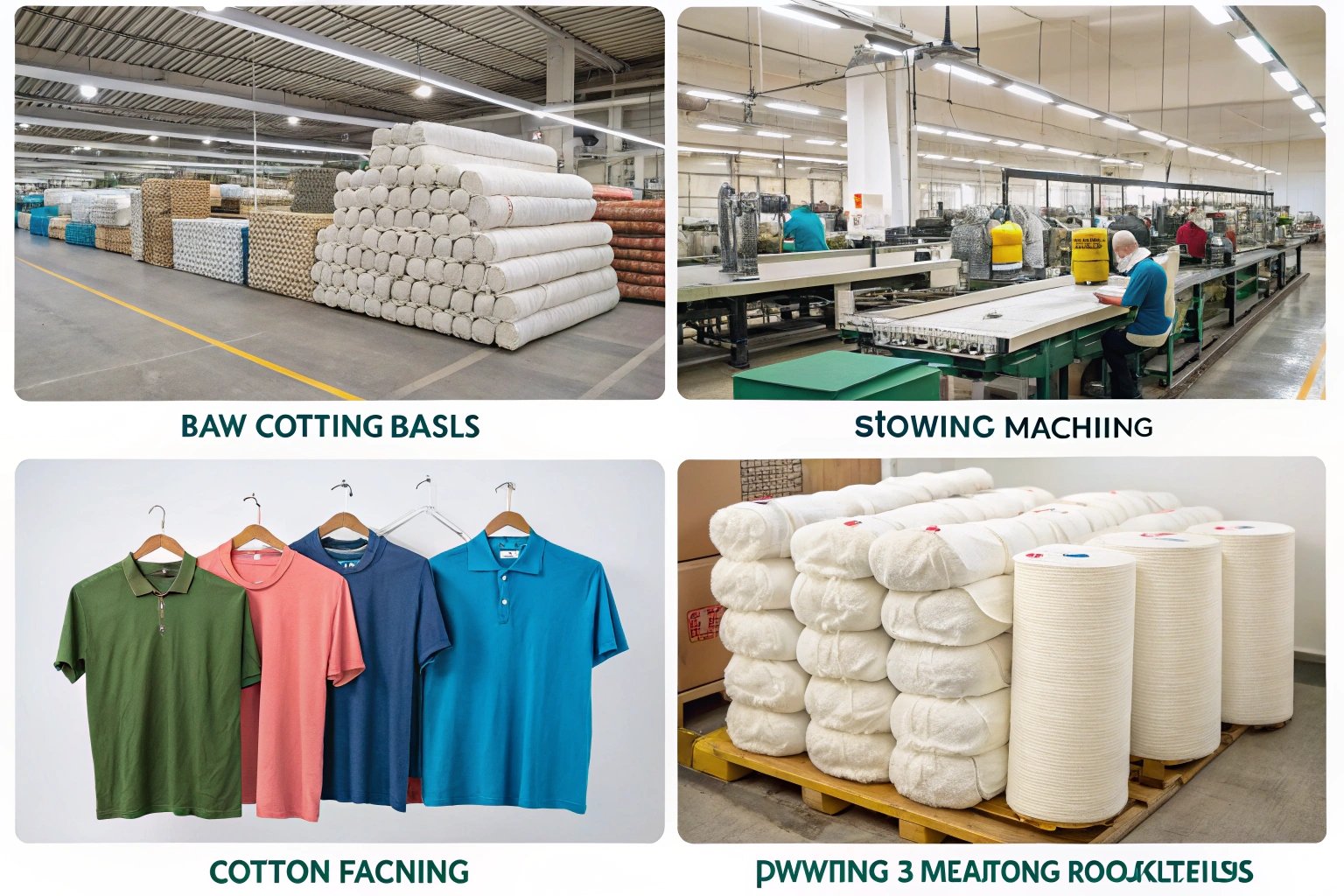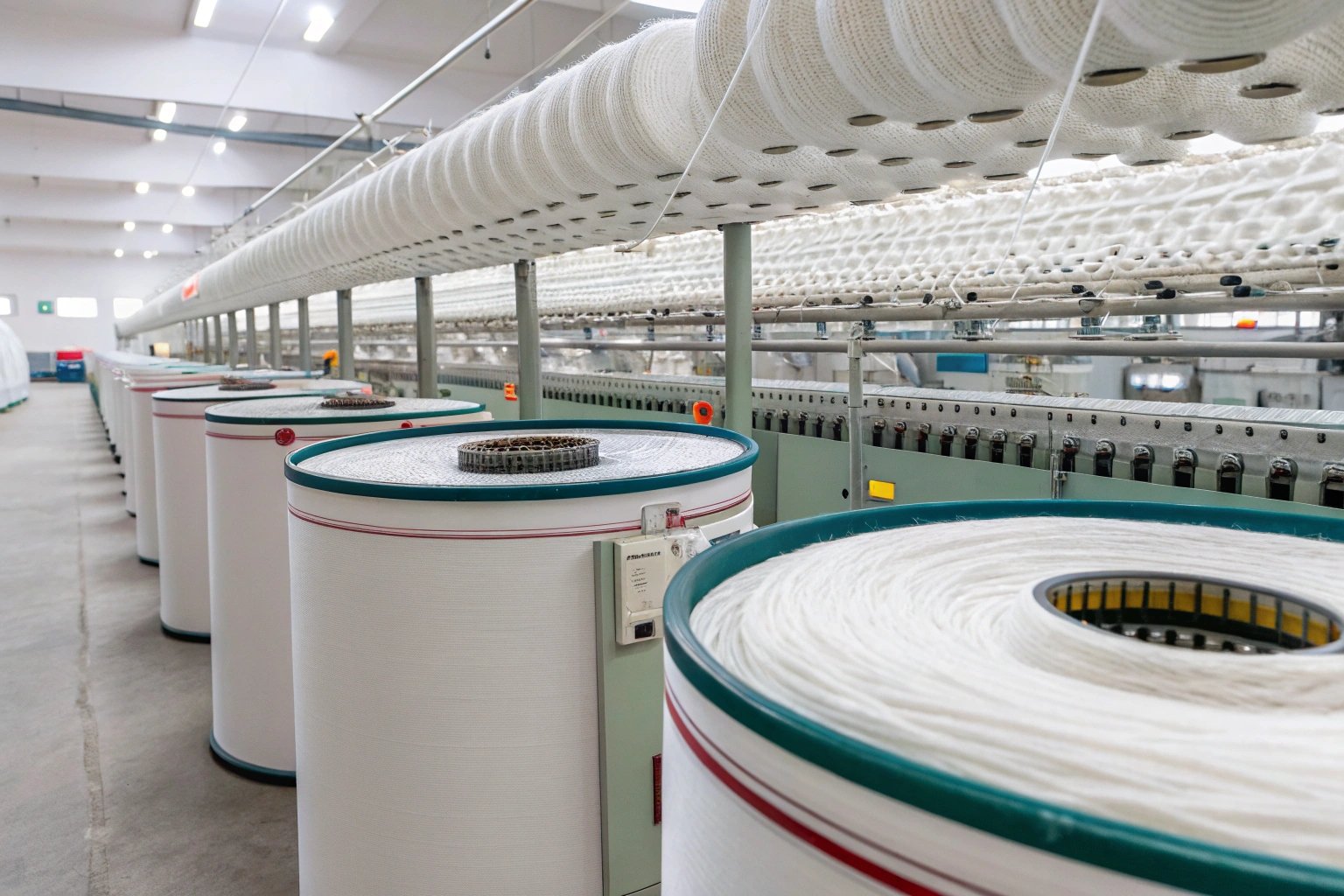A T-shirt’s journey starts with raw cotton, then goes through spinning, knitting, dyeing, cutting, sewing, finishing, packaging, and finally shipping before reaching the customer.

I used to think T-shirt production was just cutting fabric and stitching it up. But once I got involved in the full process—from fiber to final fold—I saw how many hands and machines shape that one simple shirt. Here’s how your favorite tee comes to life, step by step.
Where does the cotton for T-shirts come from?
Most cotton used for T-shirts is grown in warm regions like the U.S., India, and China, harvested, cleaned, and packed into bales for fabric production.
Cotton is a natural fiber harvested from the cotton plant. The fluffy balls are picked, then ginned to separate fibers from seeds. Once packed into bales, this raw cotton heads to spinning mills. Organic or conventional, the fiber source can influence quality and sustainability.
Brands now pay close attention to cotton traceability. We’ve worked with suppliers offering BCI and GOTS-certified cotton to meet buyer demand for ethical sourcing.
How is cotton turned into yarn?
Raw cotton fibers are carded, combed, and twisted in high-speed spinning machines to create yarn, which is the base for knit T-shirt fabric.
Spinning aligns the fibers and gives them strength. Combed cotton removes short fibers, giving a softer, smoother finish. Ring-spun yarn is common in higher-end tees—it’s finer and more consistent. Once spun, the yarn is wound onto cones, ready for knitting.
In our factory, we use ring-spun combed cotton yarns for our premium lines and open-end yarn for basic, low-cost options.
How is T-shirt fabric made?
Cotton yarn is knit into fabric using circular knitting machines that produce soft, stretchy jersey—ideal for most T-shirts.

Jersey knit is the most common structure for tees. Machines loop yarns into thin, breathable layers. Double knits like interlock offer more weight and structure for thicker shirts.
Once knit, the fabric is rolled into huge tubes, inspected for flaws, and sent off for dyeing. Some brands prefer to dye yarn first (yarn-dyeing), but most T-shirt fabrics are dyed after knitting.
How is the fabric dyed and finished?
Fabric is dyed using reactive or pigment dyes, then finished with softeners, shrink control, or moisture-wicking treatments before cutting begins.
Reactive dyes bond with cotton and give rich, long-lasting colors. Pigment dyes sit on the surface for faded or vintage looks. We’ve used both depending on the client’s style direction.
After dyeing, fabric is heat-set to reduce shrinkage. Softeners and silicone washes improve hand feel. We even add wicking treatments for performance shirts.
Here’s a breakdown:
| Dye Type | Best For |
|---|---|
| Reactive Dye | Bright, permanent color |
| Pigment Dye | Vintage, faded look |
| Disperse Dye | Polyester performance shirts |
How is a T-shirt cut and sewn?
T-shirts are cut using patterns and stacked layers, then stitched together in lines where each worker handles a single construction step.
")
Fabric is first laid in stacks and cut with electric knives or lasers. Fronts, backs, sleeves, neckbands—all shaped precisely. Then they’re stitched on an assembly line. One person sews shoulders, another sleeves, another hems.
We use flatlock stitching for activewear and overlock for basics. Neck labels, care tags, and sometimes brand trims are added at this stage.
What happens after sewing?
Finished T-shirts are steamed, quality-checked, tagged, folded, and packed for delivery—whether to stores, warehouses, or direct customers.
Steaming removes wrinkles. Each piece is checked for stitching, holes, or defects. Size tags and brand labels are attached, sometimes with hang tags or barcodes.
For exports, we pack by size and color. Eco-conscious brands request recyclable polybags or paper wrap. Then it’s boxed and shipped—via air for speed or sea for savings.
How long does the full process take?
From seed to shelf, it’s faster than you’d think.
The full T-shirt production process—from cotton harvest to customer-ready packaging—takes 4 to 10 weeks depending on order size, customization, and shipping.
If fabric is in stock, we can finish a full order in 15–25 days. Custom colors or trims take longer. Sampling adds time too—but always pays off in accuracy.
Bulk orders often follow this timeline:
- Fabric ready: 2–3 days
- Cutting & sewing: 5–7 days
- Finishing & packing: 2–3 days
- Shipping: 7–30 days depending on method
Conclusion
Your T-shirt isn’t just fabric—it’s a journey through farms, machines, and hands, crafted step by step before it ever reaches your drawer.

